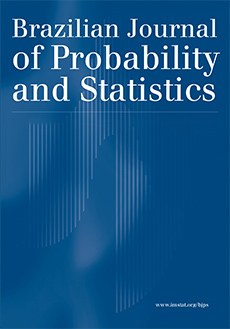Abstract
When processing synthetic aperture radar (SAR) images, there is a strong need for statistical models of scattering to take into account multiplicative noise. For instance, the classification process needs to be based on the use of statistics. Our main contribution is the choice of an accurate model for SAR images over urban areas and its use in a Markovian classification algorithm. Clutter in SAR images becomes non-Gaussian when the resolution is high or when the area is manmade. Many models have been proposed to fit with non-Gaussian scattering statistics (K, Weibull, Log-normal, etc.), but none of them is flexible enough to model all kinds of surfaces. Frery et al. [IEEE Transactions on Geoscience and Remote Sensing 35 (1997) 648–659] proposed a new class of distributions, $\mathcal{G}$ distribution, arising from the multiplicative model. Classical distributions such as $\mathcal{K}$ are particular cases of this new class. A special case of this class called $\mathcal{G}^{0}$ is shown able to model extremely heterogeneous clutter, such as that of urban areas. The quality of the classification obtained by mixing this model and a Markovian segmentation is high.
Citation
Mery Picco. Gabriela Palacio. "Markovian classification of SAR images using $\mathcal{G}^{0}_{I}$ model." Braz. J. Probab. Stat. 23 (2) 166 - 178, December 2009. https://doi.org/10.1214/00-BJPS020
Information





